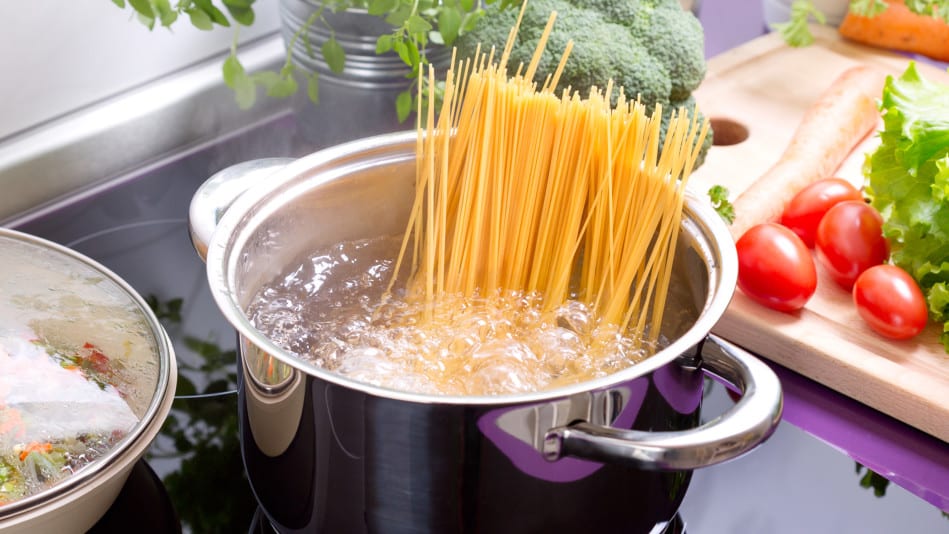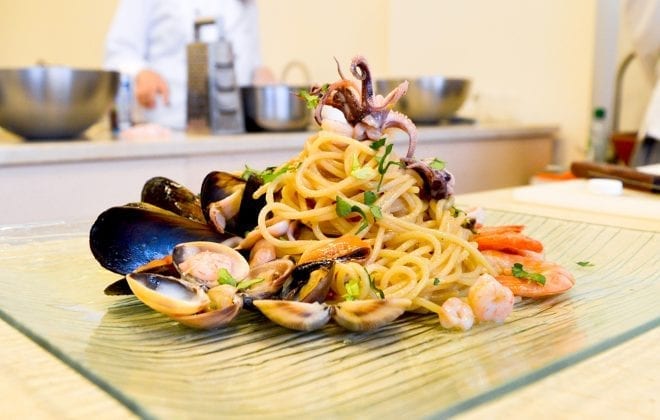HOW TO COOK THE PASTA “Al Dente”
How to cook the pasta al dente
It is true, cooking pasta correctly is not that difficult, but it is necessary to respect some fundamental indications.
Although pasta cooking is a very simple operation, BUT it is easy to mistake the preparation. In fact, it is essential to cook the pasta at the right point. Nowadays almost all producers indicate the correct cooking time on the package, but it is preferable to know how to evaluate independently if the pasta is ‘al dente’, as required by the authentic Italian gastronomic tradition.
The pasta is ‘al dente’ if it is properly cooked, but does not stick to itself and opposes a slight resistance to chewing.
To achieve this, you have to follow a few simple rules. First of all, with regard to the doses, you must remember three ‘golden rules’: 1, 10, 100. That is: 1 l of water and 10 g of salt (even if you tend to lower it to 7 g) every 100 g of dry pasta. These proportions, as well as allowing the dough to move freely inside the pot while cooking, cause an accumulation of heat such as to bring the water to a boil as quickly as possible, after having lowered the dough.
As for the cooking process, however, just follow the simple instructions below:
- Put the necessary water in a tall, wide pot, place it on the fire and let it boil.
- Add salt only when the water starts to boil dramatically.
- After the salt has melted, toss the pasta. Remember to mix it after about a minute and at least for the first four minutes keep stirring at regular intervals.
- Cook the pasta one minute less than the recommended time on the package, because the pasta will continue cooking in the pan.
- Keep a modest amount of cooking water aside.
- Drain the pasta and finish the preparation: let it ‘saut’ in the pan with the sauce that you have already cooked, adding a tablespoon of cooking water and Parmesan if necessary. Continue until the sauce and the dough will not become homogeneous and creamy.
Finally, a brief list of precautions useful for obtaining optimal pasta cooking:
- The pasta cooked ‘al dente’ must retain a slight resistance to chewing, that is to say, to contrast perceptibly the fork that compresses it or the tooth that cuts it. An overly short cooking, recognizable by the persistence of a white and hard trace inside the pasta, in fact, will leave it raw inside, while an excessive cooking will make it limp, soggy and less digestible.
- The difficulty in cooking the pasta is also dependent on its quality: if the pasta is poor, often requires very short cooking times, if the pasta is of high quality, however, the variability and the possibilities of choice for the degree of cooking increase.
- Keep in mind that, since the last tasting, pasta continues to cook (while it is drained, seasoned, distributed in the dishes and brought to the table).
- The pasta must be immersed in boiling water, only in this way the heat can penetrate evenly to the central part, and cause uniform cooking. Also for this reason the cooking must take place in salted water, which boils at a higher temperature.
- The addition of salt is another fundamental step: it must be carried out when the water starts to boil dramatically. The salt, in fact, in solution with water, causes an increase in the temperature required for boiling, interrupting the process for a short time, but it must necessarily be added before pouring the dough, so that it is properly salted and cooks uniformly.
DO YOU WANT BECOME A REAL EXPERT IN PASTA? Visit the “Master of Pasta Course” Page.





